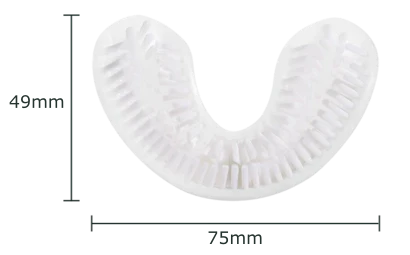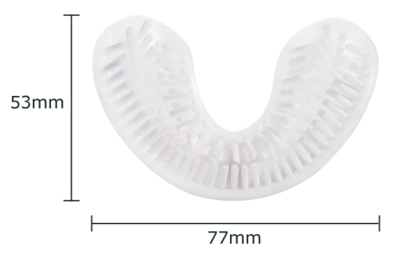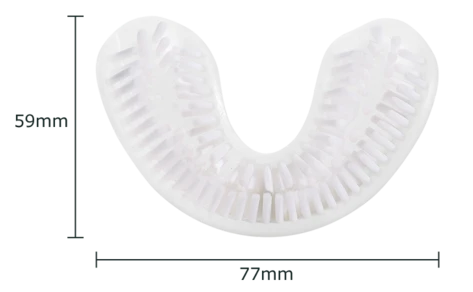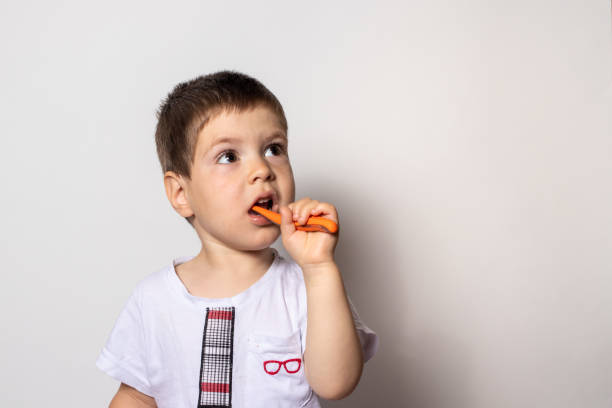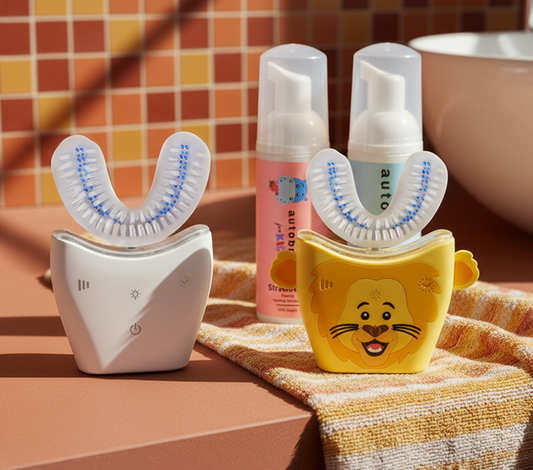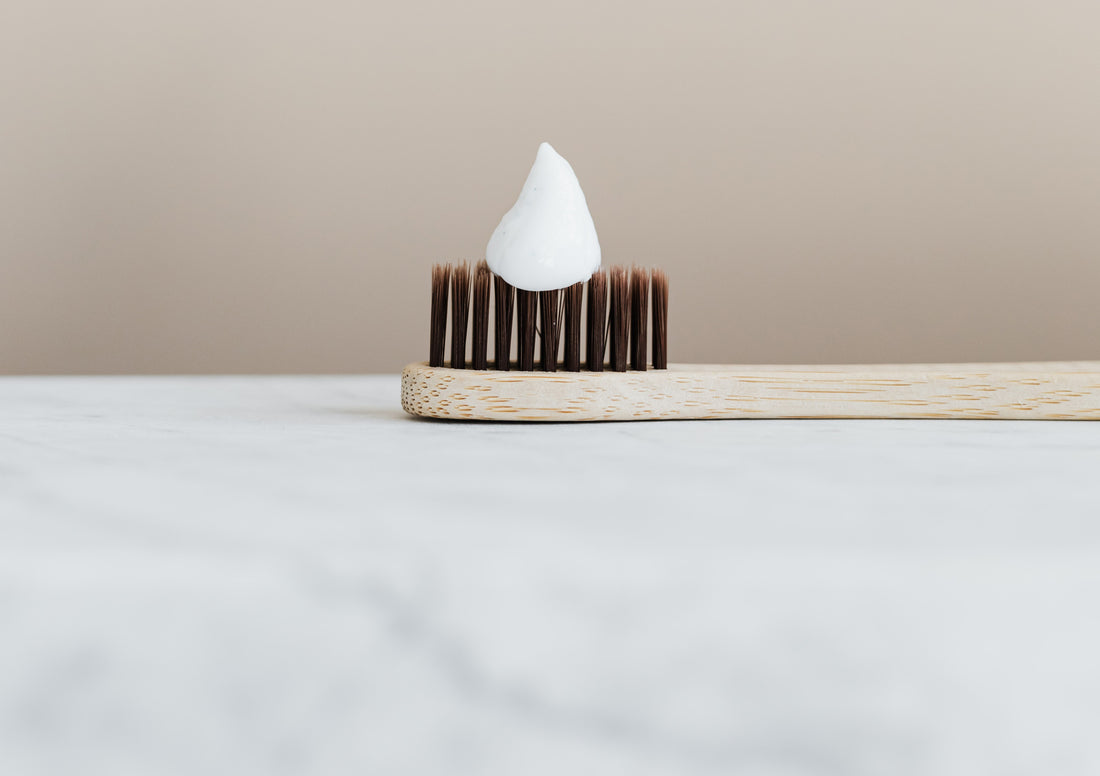
Can Toothpaste Be Swallowed?
Kids commonly swallow toothpaste while they are learning the art of spitting. But parents are asking, "how much toothpaste is too much to be swallowed?"
In this blog, we'll go over what makes swallowing toothpaste dangerous, side effects of swallowing too much toothpaste, and when your child should seek professional care.
What is toothpaste made of?
One crucial step to knowing whether this is a cause for concern or not is finding out the ingredients in a toothpaste.

Below is a list of the most commonly used toothpaste ingredients and what they're used for.
- Glycerol: Glycerol is used in toothpaste for several reasons, mainly to prevent it from drying out, to give it a smooth texture, and to make it easier to squeeze out from its tube. You can also find glycerol in a variety of food products like peanut butter and yogurt.
- Sorbitol: Sorbitol is a sweetener, often used as a sugar substitute by people with diabetes. But unlike normal sugar, the ingredient does not cause the formation of cavities. In toothpaste, the ingredient is used both as a sweetener and as a binder.
- Calcium carbonate: Calcium carbonate removes stains, plaque, and surface stains from the teeth.
- Sodium lauryl sulfate: Sodium lauryl sulfate or SLS is a type of detergent that causes the toothpaste to foam.
- Fluoride: Fluoride is a type of mineral that is added to toothpaste to help fight and prevent tooth decay. The mineral also helps make teeth stronger and more resilient against acids.
Is fluoride harmful when swallowed?
Yes and no. Fluoride's toxicity is dependent on how much is ingested. Or, as the adage goes, the dose makes the poison. Toothpaste should not be ingested because elevated amounts of fluoride in the body can cause the condition known as fluorosis.
Fluorosis occurs when there is a significant amount of fluoride in the blood. Left unchecked, fluorosis can cause the appearance of permanent white lines on the teeth's surface. And in severe cases, it can cause the teeth to crumble.
Once you get fluorosis, it can't be reverse which is why prevention is crucial. Kids up to eight years old are the most vulnerable to getting fluorosis so close supervision as advised during brushing.
🦷 Toothy Trivia: Japan has been using this ingredient as a fluoride alternative for over 40 years now.
How much fluoride is too much to swallow?
Thankfully fluoride is only slightly toxic, so it rarely causes serious problems. In fact, professionals estimate that a child would have to ingest 5 mg of fluoride per kilogram of body weight for it to have any toxic effects. Most kiddos don't ingest nearly enough to have dangerous side effects.
More so, it would take a dose larger than 16 mg per kilogram of body weight for fluoride poisoning to become lethal. To put this in perspective, one squeeze of toothpaste generally only has 1.3 mg of fluoride.
What happens if your child swallows toothpaste?
If your child swallow a little more than a pea-sized amount of toothpaste, they may experience a mild tummy ache. You may offer them a glass of milk or yogurt to help. Fluoride binds to calcium, alleviating any discomfort.
If you child has swallow a great deal more than the recommended dose (a pea-sized amount for kids 3+ years old), they may experience the following side effects:
- Nausea
- Vomiting
- Abdominal pain
- Diarrhea
- Periostitis (inflammation of the tissue around your bones)
Do not make them throw up. Remain calm and call the poison control center for proper instruction on treatment.
Is fluoride-free toothpaste safe to swallow?
Yes! Since fluoride-free toothpaste doesn't contain fluoride, there is no risk of overdose. However, you should still be diligent at checking the tubes ingredients to ensure it's a healthy choice for child.

Skip the stress altogether and switch to AutoBrush's kid-friendly foaming toothpaste available in fluoride and fluoride-free formulas.
Why parents and kiddos love AutoBrush Foaming Toothpaste:
- SLS-free
- Gluten-free
- Vegan
- Non-GMO
- Easy to apply & rinse off
- Kid-friendly flavors including bubblegum, strawberry, and mint
While you should not intentionally ingest any toothpaste, AutoBrush's foam toothpaste is made of all-natural ingredients and is safe if swallowed.
🦷 Toothy Tip: Want to try making your own all-natural toothpaste? Check out our DIY recipes here.
Other Toothpaste FAQs
What is SLS and can it be harmful?
SLS, even though a very common toothpaste ingredient, can cause a few side effects for some. These include mouth irritation and canker sores.
The most important thing to note is aside from its foaming capabilities, SLS doesn’t necessarily do anything to help clean your child's teeth and gums. It is solely there to add to the sensory experience.
Although SLS-free toothpaste lacks the familiar foam, it can clean teeth just as well as other kinds of toothpaste that contain this ingredient. If you're looking to switch to one, AutoBrush offers SLS-free toothpaste for both kids and adults.
"How do I get my child to spit out their toothpaste?"
Even with a fluoride-free toothpaste, it's still important to teach your kids to properly spit out toothpaste after every brush to avoid them swallowing an excessive amount of toothpaste.
First, make sure that you put just the right amount of toothpaste. According to the American Academy of Pediatrics, a pea-size amount of toothpaste is more than enough for kids aged between three and six.
Second, you should always supervise your child while they're brushing their teeth. If your kid is still a toddler, encourage them to hold their head at a slight downward angle. This will help ensure that extra toothpaste drips into the sink.
You can also try turning each brushing session into a game. For example, when it's time to spit out the toothpaste, you can use the sink for target practice.
🦷 Toothy Tip: Found an old tube of toothpaste under the sink? Check out clever ways you can use expired toothpaste around the house.
Final Thoughts…
Teaching a toddler how to brush properly can be a struggle but with the right information and constant encouragement, a little everyday goes a long, long way.
If you have any questions regarding your child's toothpaste, consult with your child's dentist so they can advise on proper practices and best alternatives if needed.








